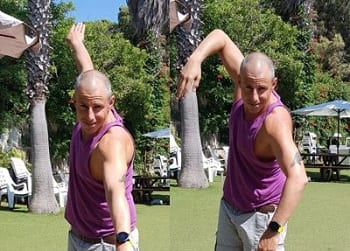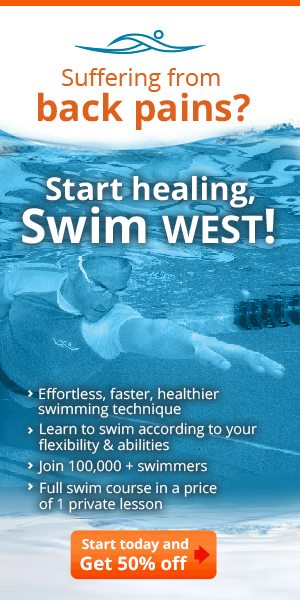What’s better: To swim with straight hands above water or high elbow?
Yes age and flexibility do matter, pain matters and distance, the big question is what’s the best for you?
The Straight Hand Dilemma vs. the High Elbow: What’s more correct? What’s faster? At what age is it better to swim with straight hands and when with an elbow above the palm of the hand when moving the hands above the water?
In this article we will sort out that mess and understand the most important connection between maintaining and strengthening the shoulders and speed.
But before everything, this video of Caeleb Dressel making history when swimming 17.81 at 50 m us a must-watch.
Usually after seeing Caeleb Dressel people say: I want to swim like that, just like that! What do I need to do to swim so fast?
The answer of course is not so simple, and I can tell you that we will talk about exactly that in the article.
What are the benefits of swimming with straight hands?
We have a larger lever and thus the pulling hand can advance us faster.
Our range of motion is greater and we get much further without the resistance of the water.
The pressure on the deltoid is greater and therefore also strengthens the muscles at a higher rate.
Some people can’t lift their elbows high over the water because of shoulder pain, lack of flexibility or neck pressure, and they must swim with straight hands until the shoulder blade is released.
What are the disadvantages of swimming with straight hands?
There are swimmers who can’t manage to coordinate straightening over water and folding under water.
The pressure on the deltoid is greater, and if we don’t have the flexibility it can easily cause us shoulder injuries.
In swimming with bent elbow there is a different division between more muscles.
It is difficult to continue with straight hands for a long time.
After we understood some of the advantages and disadvantages, we will understand why it’s recommended for children to learn freestyle with straight hands.
What is important to us in learning and practicing swimming in the early stages with children?
Before we talk about technique, technique, technique and some more technique, we need to build the skeleton, just like building a house. You can’t do any interior designing before you have a good solid foundation and this process of course takes time.
Why work with straight hands anyway?
With straight hands we increase range of motion, which is super-important for children, we work on rotation, we strengthen the deltoid muscle, and work slowly on speed. Many trainers like to combine working with straight hands and then making a change depending on the body structure of the swimmer.
Very interesting data from the Olympic Finals:
Men 50 m Olympic finals freestyle – all swim with straight hands. Women 50 m freestyle – 2 out of 8 with straight hands.
Men’s 100m Olympic Final – only 2 with straight hands and 0 women.
The main reason is that in order to swim in this way it requires a lot of power.
It is recommended to see the Olympic champion and the world record holder for 1500m – Sun Yang, filmed from several angles.
Why do most long distance and open water swimmers swim with a bent elbow?
When we swim long distances, our goal is clear – to create oxygenation, or muscle fatigue, at a slower pace, especially when swimming 1500m or 10km in the sea. Swimming with straight hands creates too much pressure on the shoulder and can cause repeated infections and unnecessary strain on the neck, lower back, and shoulder. In spite of all this, there are long distance swimmers who know how to make a change in the last two hundred or hundred meters of the ten kilometers to straight hands, and thus manage to recruit more muscles and swim faster at the finish.
Now for the most interesting part, which is the Masters swimmers, adult swimmers who are not professionals, aged 25 and over.
Here we look at our goal as coaches and therapists, first of all to make the swimmer swim with accordance to their body structure while maintaining the neck and back, and when everything is adjusted then you can also develop the speed.
95% of the Masters swimmers (except for the 50 and 100m sprint) are suitable for swimming with folded hands, which means that the elbow should be raised to a little less than maximum height. That means to lean correctly on the water but not to strain the shoulder.
If you have shoulder pain it is recommended to consult one of the professional managers in Water World and work according to this plan to treat the shoulder through swimming.
What you should never do is rest and think rest will help.
How do we know if we are one of the 5% who should swim with straight hands even though we are 25 years of age or older?
If you are not flexible, your elbow falls into the water, or you have very strong pressure on your neck, you should lift your hands straight, but not sharply (not to the sky), thus increasing the range of motion at a higher rate.
When there is pressure to the neck or shoulder it is forbidden to work on speed, because then the damage can be much greater.
In conclusion:
You should always consult your swimming coach. He knows you and knows what is right for you and what will build your body more correctly. If you have shoulder, neck or lower back pain you must swim WEST and learn how best to swim while maintaining the important joints of the body.
A small and last secret:
** If you customize your swimming to your body and your abilities, while keeping your neck and back, you will swim both short and long distances without any injuries and much faster.
Learn to swim according to your flexibility and abilities


